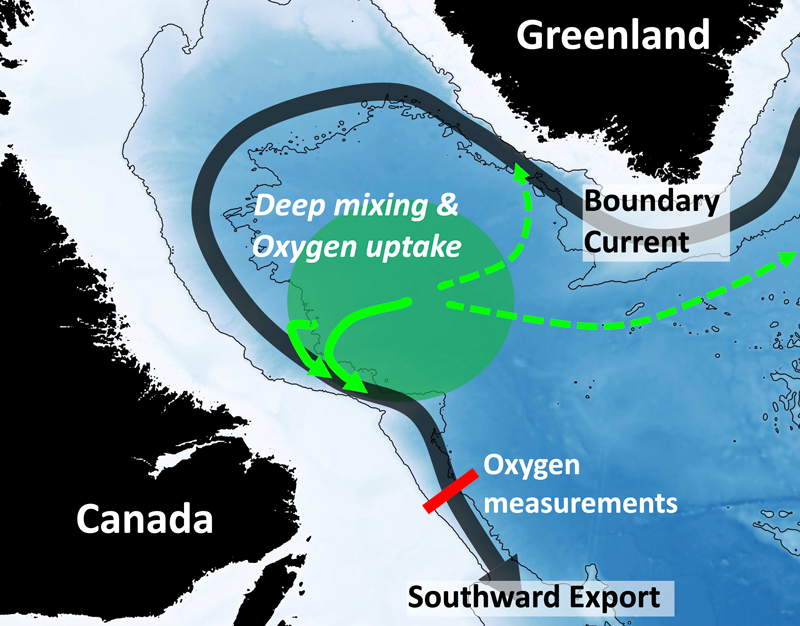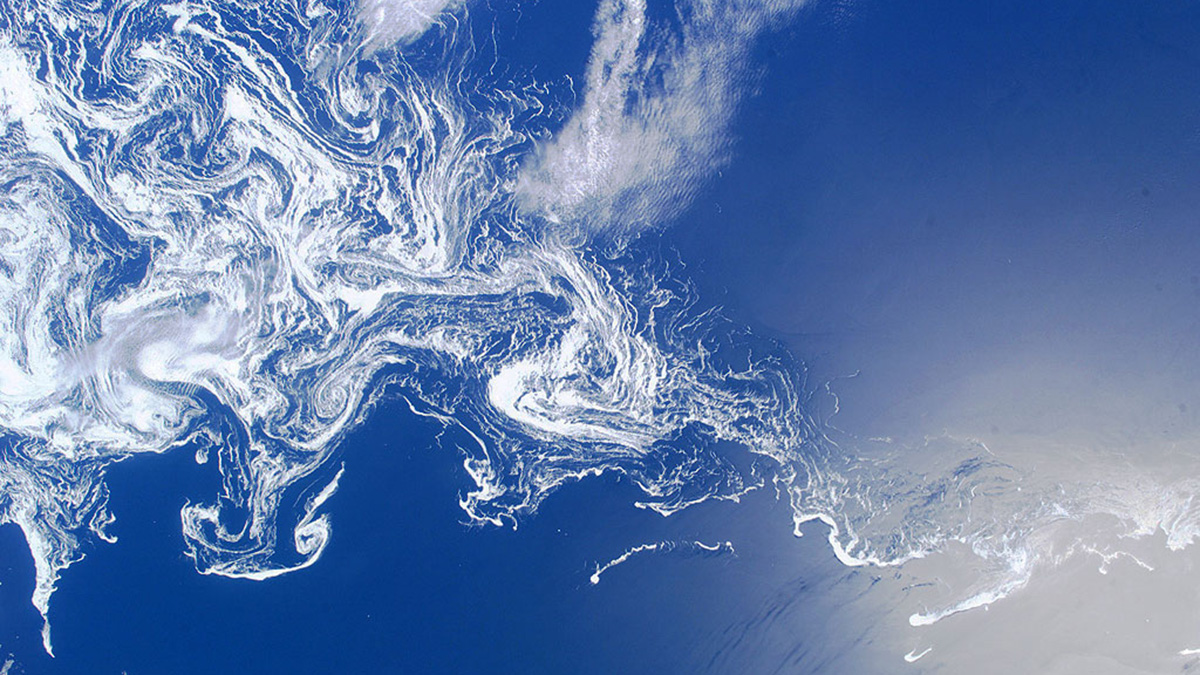The Labrador Sea plays a vital role in supplying oxygen to deep-sea life across the world. Now, a Canadian-German team has, for the first time, measured the amount of oxygen exiting the Labrador Sea basin, using data from a deep-ocean current.
Located in the North Atlantic between Canada and Greenland, the Labrador Sea acts as an ocean lung. Vast quantities of oxygen are transferred from the atmosphere into a mixing zone extending 2 kilometers below the sea’s surface. Ultimately, this oxygen is consumed by organisms throughout the North Atlantic, and global deepwater circulation disperses it as far away as the Pacific and Indian oceans.

During winter months, cold, oxygen-rich surface water sinks, whereas deeper water upwells. In this way, convection cells are established and are strengthened by surface winds. Throughout spring and summer, dissolved oxygen enters a boundary current that skirts counterclockwise around the perimeter of the basin, eventually entering the open North Atlantic near the edge of the Canadian shelf.
Labrador currents are among the most well studied in the world. “We know a lot about how water flows in this region but much less about the oxygen transport,” said Dariia Atamanchuk of Dalhousie University in Canada. “We have just assumed the two correlate, which is not necessarily true.”
In an ongoing project, Atamanchuk and colleagues are tracking oxygen levels in a region of the Labrador Sea between the interior mixing zone and the southward boundary current.
Deep Breathing
For their latest results, the team members studied the two cycles between May 2016 and May 2018. Data came from sensors clipped to mooring wires at 600-meter depths, placed at four separate locations along a latitude of 53°N. Researchers found that roughly 1.6 trillion moles of oxygen were exiting the Labrador Sea via this route each year. The result implies that water from the Labrador Sea provides between 42% and 71% of the oxygen consumed by deep-sea life between the equator and 50°N in North Atlantic waters.
Publishing their findings in Biogeosciences, the scientists said this quantity of oxygen accounts for half of the estimated wintertime uptake in the Labrador Sea’s mixing zone. “We still think the other half of the oxygen is exported, but it’s just along other routes,” said Jannes Koelling of Dalhousie University, the study’s lead author. Some of this remaining oxygen could enter the boundary current elsewhere, and some likely feeds into the Irminger Sea between Greenland and Iceland. A smaller fraction is used by organisms in the Labrador Sea itself.
Koelling’s team is working on a follow-up study to track oxygen exported from the Labrador Sea over five annual cycles between 2017 and 2022. “The idea is to look at interannual variability, and from what I’ve seen so far there are changes,” he said. To build a more complete picture of the full ventilation process, 60 additional oxygen sensors were added to moorings between 53°N and 60°N in the western Labrador Sea.
Taking the Labrador’s Breath Away
Oceanographers fear that oxygen uptake in the Labrador Sea will reduce as increasing amounts of meltwater enter the basin from the Greenland Ice Sheet. Freshwater is less dense than seawater, so it can weaken convection cells in the sea’s mixing zone, reducing its capacity to transfer oxygen to the deep sea. Warmer winters could also reduce the temperature differential between the ocean surface and depths, further weakening convection.
“In the long run, there is a risk that increased freshwater input can shut down this deep ocean convection completely.”
“In the long run, there is a risk that increased freshwater input can shut down this deep ocean convection completely,” said Marilena Oltmanns, a physical oceanographer at the National Oceanography Centre in the United Kingdom who was not involved in the recent study. She suggested that the biggest threat to the Labrador’s oxygen uptake could come from melting sea ice and glacial ice in the Arctic—a region currently warming twice as fast as the rest of the planet. Oltmanns cautioned, however, that natural variations in deep-ocean convection over multiple timescales make it tough to unpick the impacts of melting ice.
The Labrador Sea water is just one component of the North Atlantic Deep Water. Significant oxygen ventilation may also be occurring in other components, such as the Subpolar Mode Water, the North East Atlantic Deep Water, and the Denmark Strait overflow. Ilaria Stendardo, an oceanographer at the University of Bremen in Germany, said ocean circulation in these other water masses could also be threatened by warming temperatures and melting ice.
“The wider implication,” said Stendardo, who was not involved in the study, “is that since the ocean absorbs and stores a significant portion of anthropogenic carbon, if convection reduces or ceases, the ocean might also become less efficient in the storage of anthropogenic carbon.”
—James Dacey (@JamesDacey), Science Writer

